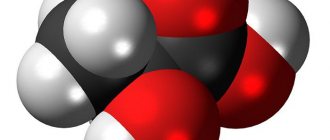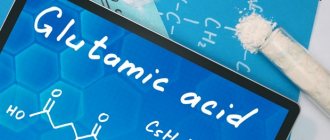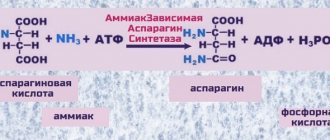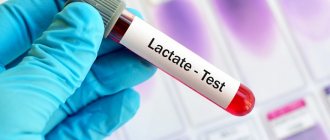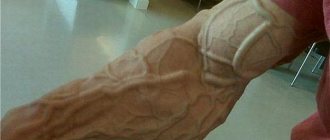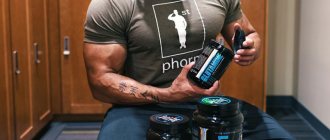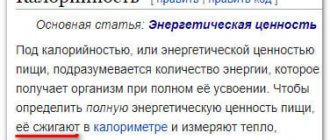Author
— Fishman R.
How the myth was born and why it is incorrect that lactic acid (in fact, lactate is formed in the body) causes an increase in the acidity of muscle cells during heavy physical activity.
Intense physical activity leads to increased acidity in muscle tissue. It is usually associated with the production and accumulation of lactate (a salt of lactic acid present in the body) - you can read about this in popular articles and in professional textbooks. However, a growing body of research indicates that while there is a correlation between increased lactate and acidity in actively working muscle cells, the cause-and-effect relationship is very different. Apparently, it, on the contrary, helps to “soften” this process.
American physiologists Robert Robergs, Farzenah Ghiasvand and Daryl Parker conducted a detailed analysis of the biochemical processes that provide energy to an actively working muscle cell and lead to acidification of its environment. Their report was published in 2004 in the American Journal of Physiology. We refer readers to it for many useful details; here we will try to clearly present the main explanations and conclusions of the authors of the article.
What you need to know to get started
- Acids are compounds that easily donate the hydrogen cation H+ (proton). Therefore, the acidity of the medium is determined through the pH value, which corresponds to the content of protons in the solution. pH is an inverse power law, so the lower it is, the higher the acidity. A medium with a pH of 7 is considered neutral, and a pH close to one corresponds to a strong acid.
- The key carrier of energy – the “fuel” – of almost all processes in a living cell are adenositriophosphate (ATP) molecules. By donating one phosphate and turning into ADP, they release energy. Conversely, the addition of phosphate to ADP requires energy and allows it to be stored.
- A not very effective, but simple and fast way to obtain ATP is glycolysis, which can occur without the participation of oxygen. In this case, glucose is converted to pyruvate and two ATP molecules are formed.
- The main source of ATP in the cells of our body is the reactions of oxidative phosphorylation (“respiration”). They occur on the membranes of cellular organelles, mitochondria. Here, with the help of oxygen, pyruvate is oxidized to carbon dioxide and water, and its energy is used for the synthesis of ATP. In total, this allows you to get up to 38 ATP molecules for each glucose molecule.
- As intermediate and by-products of all these reactions, “intermediate acids”1 and free protons are formed that can change the pH of the intracellular environment. By entering the intercellular space and blood flow, some of them can affect their acidity.
The term "intermediate acids" is misleading. Despite the fact that these molecules are carboxylic acids in structure, a detailed examination of the biochemical processes shows that these molecules form acidic salts, and none of them exist as acids and do not serve as a source of protons.
How to avoid the occurrence of sore throat?
Unfortunately, no way. The only way to avoid muscle pain is not to exercise at all or choose a gentle regimen with minimal stress. However, this does not mean that any exercise will bring discomfort. You can reduce pain if you follow a few simple rules:
- Be sure to warm up before training. This should take at least twenty minutes, and during the warm-up process it is necessary to warm up all muscle groups;
- drink clean water during or after exercise;
- increase the load gradually;
- After training, do some stretching and relaxation exercises;
- Pay attention to the specialized food product for nutrition of athletes. For example, the Herbalife 24 recovery cocktail, enriched with iron to provide additional oxygen to tissues, can help you bounce back faster after physical activity and avoid injury. It contains protein and L-glutamine, which also help build muscle mass. Due to its pleasant taste, you can enjoy the cocktail and replenish your strength at the same time.
It is important! All exercises should be performed smoothly, without sudden movements or jerks, as this minimizes the risk of damage to muscles and ligaments.**
What does lactate have to do with it?
Lactic acid was discovered at the end of the 18th century. As you might guess, it was isolated from milk, although it was soon found in a variety of tissues of living organisms. At the beginning of the twentieth century. It attracted the attention of physiologists Otto Meyerhof and Archibald Hill, who in 1922 received the Nobel Prize for studying the basic mechanisms of muscle activity.
Hill noticed that muscles are able to contract in the absence of oxygen, and Meyerhof described the mechanisms that ensure this work. He established all the key reactions of glycolysis and demonstrated that lactic acid is one of its by-products - under conditions of lack of oxygen it is formed from pyruvate.
The scientists’ logic seemed ironclad: “overexerting” muscle cells consume ATP energy faster than the oxygen respiration of mitochondria replenishes its reserves. Under these conditions, they turn to less efficient but faster pathways for ATP synthesis, in particular glycolysis, which leads to the accumulation of lactic acid and a decrease in pH.
However, further research showed that not everything in these arguments is so smooth. The main thing you need to know is that the body produces lactate, not lactic acid. The seemingly small difference (after all, there are lactate and protons in solution) led to decades of incorrect explanation of the essence of the processes and the significance of lactate. To understand what is wrong here, we will have to better understand the energy metabolism of the muscle cell and the appearance of lactate.
Rice. 1.
A clear linear correlation is found between the pH of the environment in the muscle cell, on the one hand, and the amount of pyruvate and lactate, on the other. However, she does not yet talk about cause and effect.
Is lactic acid necessary?
In the human body, everything is arranged very wisely and systematically. Therefore, it cannot be considered accidental that in the case of large and intense loads (manifoldly increasing the risk of injury), not harmless acetyl-CoA, which is involved in the further supply of energy to tissues, is released, but lactic acid, the accumulation of which leads to pain and a decrease in the performance of muscle fibers. Thus, the formation of lactic acid in the muscles is part of the safety system to avoid excessive muscle damage under heavy loads.
It is sometimes believed that lactic acid is responsible for sore throat - delayed muscle pain that occurs the next day after a hard workout or work. But this is not true - soreness is the result of microtrauma in the muscles. And increased lactic acid manifests itself as a characteristic burning sensation in working muscles. It occurs during exercise, and not after training. The pain that disappears after stopping work is a signal of the removal of lactic acid from the muscles. Therefore, the question “how to remove lactic acid from muscles?” is meaningless - it is already displayed by itself almost instantly - in half a minute or a minute.
Glycolysis and others
First, muscle cells contain a reserve of creatine phosphate, a high-energy molecule that can provide them with a brief but extremely fast source of energy for explosive activity. Simplified, this reaction looks like this: creatine phosphate + ADP + proton -> creatine + ATP. As we can see, during this process protons are bound, and it leads to an increase in pH, that is, to a decrease in acidity.
The second way to quickly obtain energy is glycolysis, which allows you to obtain ATP from glucose (coming with the blood) or glycogen, a polysaccharide composed of remnants of the same glucose (and stored in muscle tissue). More often, the cell relies on glycogen, but in general the reactions in both cases are approximately the same. Schematically, their result is described as follows: glucose + 2 ADP -> 2 pyruvate + 2 ATP + 2 protons.
The accumulation of protons, it would seem, should lead to an increase in acidity. However, upon closer examination, it turns out that some of the reactions that make up glycolysis lead not to an increase, but to a decrease in the acidity of the environment. They consume a proton and some transformations of its product (pyruvate). An example of this is lactate - here is the reaction of its synthesis: pyruvate + NADH + proton -> lactate + NAD+.
In this equation, NAD+ is a coenzyme that is required for some reactions in glycolysis. NAD (nicotinamide adenine dinucleotide) switches relatively easily between oxidized (NAD+) and reduced (NADH) forms. This makes it a very versatile “tool” that enzymes use to carry out a wide variety of reactions where they need to take an electron from one substance and deliver it to another. NAD is also used in glycolysis.
The conversion of pyruvate into lactate not only brings the coenzyme NAD+ to the cell, but also reduces the concentration of protons, slowing down the acidification of the intracellular environment. If we combine the above equations of glycolysis and lactate synthesis, we will see that this tandem gives absolutely zero change in the proton balance.
Moreover, lactate is removed from the cell by a protein (Lactate - /H+ symport), which uses another proton for this, also throwing it out. This even more noticeably reduces the increase in acidity in the cell. The question arises: where then do all those protons that lead to acidification of the intracellular environment come from?
Rice. 2
. As the muscle cell works, the processes of removing accumulated lactate and protons increase.
Additional functions of lactic acid
As already mentioned, lactic acid is part of a protective mechanism that blocks muscle overload. In addition, lactic acid causes increased blood flow in the muscles and thus improves their nutrition, the removal of harmful waste products, and, consequently, growth.
In the longer term, lactic acid is involved in gluconeogenesis - replenishing glycogen reserves in the body (up to 75% of lactic acid returns to glycogen).
And finally, there are studies that have found that increasing the amount of lactic acid stimulates the cells that produce the main anabolic hormone - testosterone. It may be doubted that the introduction of external lactic acid will increase the secretion of testosterone, or that the effect of additional intake of lactic acid will be limited to the positive factor only. But, in fact, it has long been known that vigorous physical activity causes increased testosterone production. In this case, we see only the disclosure of one of the aspects of this phenomenon.
Recounting protons
The first and main source of protons in an actively working muscle cell is considered not to be the synthesis, but the breakdown of ATP, the energy of which is used for contractions and relaxations: ATP + water -> ADP + phosphate + proton. Phosphate itself is capable of serving as a buffer system that softens fluctuations in the acidity of the environment (this is how it works in the body), but it is actively involved in new reactions in the cell, and does not solve this problem very effectively.
Another source of protons is the above-mentioned coenzyme NAD+, which during glycolysis reactions loses a proton, turning into NADH. By the way, a significant part of the protons (as well as phosphate and pyruvate) found in the intracellular environment are transported to mitochondria and used for the processes of oxidative phosphorylation that take place there. Thus, mitochondria can also be called a factor in reducing acidity. But when muscles absorb energy with enormous intensity, converting ATP into ADP, this reaction is stronger than anything acting against it.
Rice. 3.
The balance between the production and use of protons in a working muscle cell. The appearance of protons is associated with ATP hydrolysis and glycolysis reactions. They are consumed in the reactions of creatine phosphate and lactate. In addition, protons bind to inorganic phosphate and buffer compounds in the cytoplasm.
Conclusion
So, an increase in the content of lactic acid in the muscles occurs as a result of intense strong loads (“anaerobic loads”), leads to pain and reduces performance. This saves the body from overload, and also serves as an important factor in subjectively assessing the effectiveness of the workout. Lactic acid is removed from the muscles very quickly - this process can only be affected by a cool-down, active rest and an increase in the body’s overall resistance to stress during systematic training. Lactic acid does not harm so much as it helps muscles grow, including indirectly by stimulating the production of testosterone.
Total
So, metabolic acidosis - acidification of the muscle cell environment during intense work - is associated with the use of ATP energy, and not with the synthesis and accumulation of lactate. Its production is necessary for the cell to replenish the costs of the coenzyme NAD +, necessary for glycolysis and the production of new “energy” ATP molecules.
This production (as well as the outward transport of lactate) requires the consumption of protons, reducing their concentration in the cell. Therefore, the formation and accumulation of lactate can be a good indicator of acidification of the cellular environment, but they are not related as cause and effect.
Source:
https://ajpregu.physiology.org/
Delayed pain syndrome - what is it?
If pain after training does not occur immediately , but after a while, then the problem is not due to a harmful substance. This is the so-called delayed pain syndrome .
As a result of hard training, microtraumas - they are very small, as they are only a few millimeters. They usually appear after 2-3 days, and the body is struck by aching pain . Therefore, it is necessary to distinguish excess lactic acid from this syndrome in order to select the correct treatment package.
Why is an athlete's lactate measured?
In professional sports, lactate is used as an indicator of load intensity. Lactate levels increase with increasing intensity, so the amount of lactate in the blood determines the type of training and calculates intensity zones. Blood lactate concentration in different intensity zones:
- in the aerobic zone - 2 mmol/l
- in the transit zone - 4-10 mmol/l
- in the anaerobic zone - more than 10 mmol/l
By conducting a lactate test, you can most accurately determine the athlete's TNA or lactate threshold. A lactate level of 4 mmol/L is considered the approximate TANO level - the point at which the body switches from a predominantly aerobic to anaerobic mode. Many amateur athletes train to the point of exhaustion, mistakenly believing that the more intense the training, the better the result. Fatigue and lack of coordination are usually a sign of high blood lactate levels. Frequent training at high intensity not only does not bring results, but also worsens physical fitness and leads to overtraining .
Measuring blood lactate levels. Source: trackanalysis.co.uk
Knowing your lactate threshold, you can build an effective training plan and train at the right intensity. For example: training at the lactate threshold level (that is, with a lactate concentration in the blood of about 4 mmol/l) develops the athlete’s threshold speed and increases PANO. Training at a lactate level of 0.5-1.5 mmol/L is considered restorative, and at a lactate concentration of 2-4 mmol/L aerobic training is performed, which forms the main part of an endurance athlete's training plan.
During the training cycle, the effectiveness of the athlete’s training is monitored by lactate levels. If over time the lactate level decreases under the same loads, this indicates an increase in athletic fitness; if it increases, this indicates a decline in fitness. In the latter case, the training plan is adjusted.
What determines lactate levels?
The level of lactate in an athlete's blood depends on the intensity of training and the body's ability to utilize lactic acid. During intense exercise, the lactate mechanism for energy production is activated, where lactate is formed together with ATP. The faster you run or the more often you pedal, the more energy is required, and with it lactate is formed and accumulated. Lactate accumulation is explained by the fact that the rate of lactate formation during intense exercise is higher than the rate of its processing. The essence of training at the PANO is to teach the body to use lactate more efficiently and not allow it to accumulate.
At rest, the concentration of lactate in the blood is approximately 1-1.5 mmol/l. During exercise, lactate levels increase and can reach values of 30 mmol/L during heavy exercise.
Blood sampling for lactate from the earlobe. Source: core4endurance.com.au
Treatment
To relieve the intensity of pain in the lower back after exercise, you should follow two recommendations: remove the cause and use painkillers. When it doesn’t help, you need to see a doctor.
As local therapy, it is recommended to treat the lumbar area with Dollit, Finalgon, Butadion and other ointments and gels of identical action.
"Finalgon"
The list of means is very wide, but in terms of effectiveness they are no different from each other. The existing difference in cost is explained by the popularity of the brands and the success of the manufacturers' advertising campaigns. Inflammatory processes in nerve fibers are treated with non-steroidal drugs.
